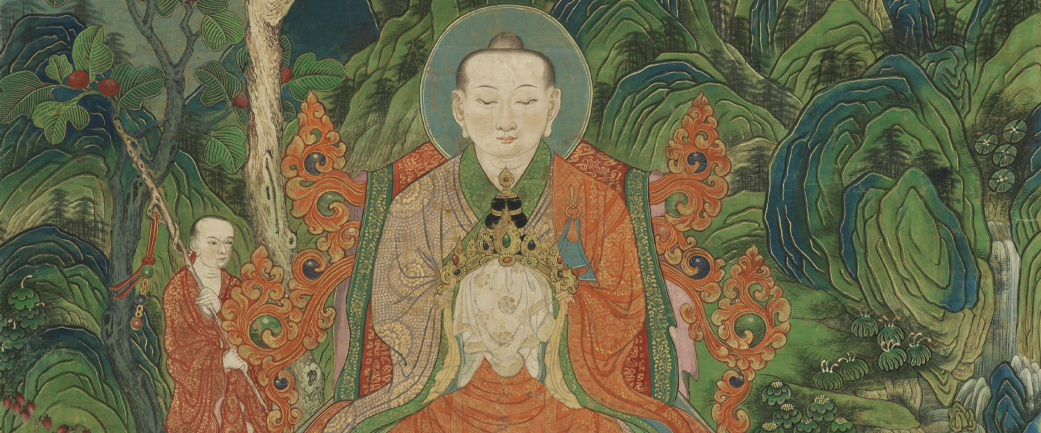
Remembering the legacy of Thich Nhat Hanh
In the history of modern-day Buddhism, Thich Nhat Hanh will be remembered as a luminous leader of integrity in practice. While the Vietnamese-born teacher has never been to the Rubin Museum, his thinking, his perception, and indeed his poetry of perceiving have influenced how we do programs at the Rubin.
In August 2017, the Rubin premiered the film Walk With Me, which follows everyday life at Plum Village and the uncommon members of Thich Nhat Hanh’s community. The film serves as a vehicle to explore the core themes of the venerated monk’s teaching.
On the occasion of the premiere, over fifty monastics from Blue Cliffs Monastery in New York State came to the city to take part in an encounter with the Rubin Museum’s art and visitors. For a whole day the monks and nuns sat in intimate places in the galleries. Visitors were invited to sit with them. They could strike up a conversation. Or not. They could discuss the art around them. Or not. But through the presence of the monastics the visitors could””if they were open to it””absorb something of the appreciation of interbeing-ness that their berobed sitting partners had cultivated.
Interbeing is a major theme in Thich Nhat Hanh’s teachings. It alerts us to the interdependence of our ecosystem, suggesting that what you see is but a culmination””and an impermanent one at that””of myriad associations and contributions to its being. This idea is famously manifested in the orange meditation that Thich Nhat Hanh articulated in his poetry and his practice. It is an illustration of mindfulness. If you examine an orange deeply, first scanning it with your eyes, you start to realize that there are many non-orange aspects of being an orange that make it possible for an orange to come to be, or come to appear to be, an orange.
The Meditation on Eating an Orange asks you to bring full attention to the orange in your hand. It first invites you to smell and imagine the orange trees in the grove, standing the test of time and weather. The soil, the sun, and human attention have all produced the experience that you are about to enjoy. The meditation continues to invite you to feel, to pull the orange apart studiously, savoring each action and each aspect of witnessing the unfurling of its peel.
The process is not so different from what we encourage visitors to do when they are in front of a work of art in the galleries. While you can’t engage your sense of touch with most of the art in our collection, you can train your eyes to read texture and imagine smell, building an ecosystem of associations that enrich your appreciation of what is before you.
The next time you admire the luminous green in a Tibetan painting””say, as you take in the colored robes enfolding the Buddha’s son and first disciple, Rahula, seated at the foot of a tree laden with orange fruits in this thangka from the Rubin Museum’s collection””think of what it took to get there. Just as the orange tree mines the earth for minerals and nutrients, so the malachite is extracted from the ground, cleaned, crushed, and mixed with water and glue to create the layer of luminosity we see in the painting today. And if you think the comparison between Himalayan art and an orange is a little far fetched, bear in mind that citrus fruits have their genetic origins in the foothills of the high Himalayas.[1] Art and the orange are both fruits, and they invite our appreciation, not just for what they are but also what they connect us to.
[1] Katie Langin, “The Origin of Oranges (and Lemons) Is High in the Himalayas, Science, February 9, 2018, https://www.sciencemag.org/news/2018/02/origin-oranges-and-lemons-high-himalayas.
About the Contributor
Tim McHenry is Deputy Executive Director and Chief Programmatic Officer at the Rubin Museum of Art

Image Credit
Arat Rahula; China, Qing Dynasty, Qianlong period (1736″“1795); Pigments on cloth; 54 × 33 1/2 in. (estimated); Rubin Museum of Art, C2004.9.

